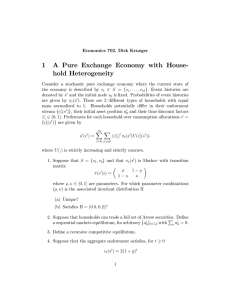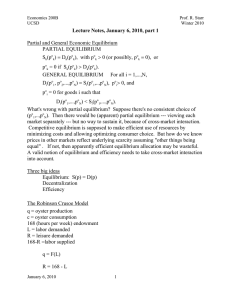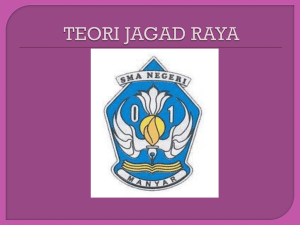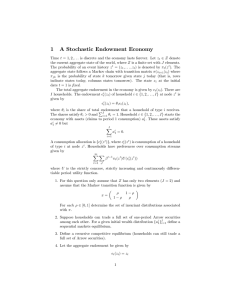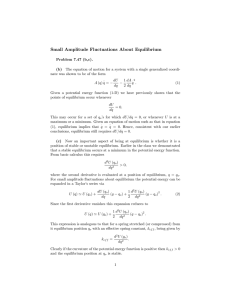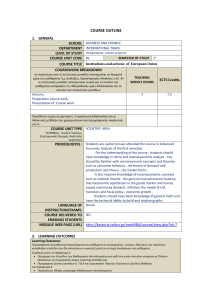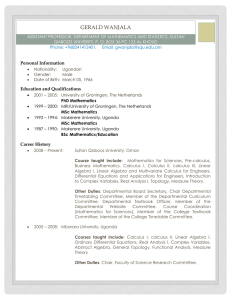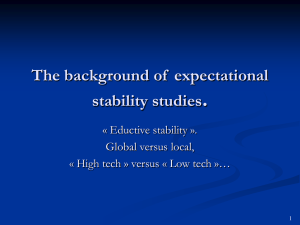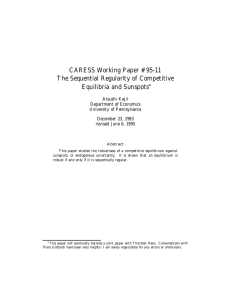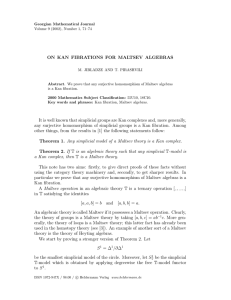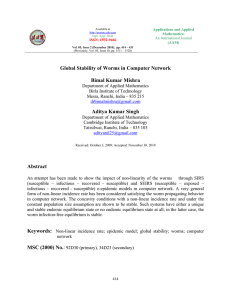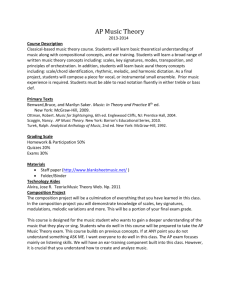Advanced microeconomics
advertisement
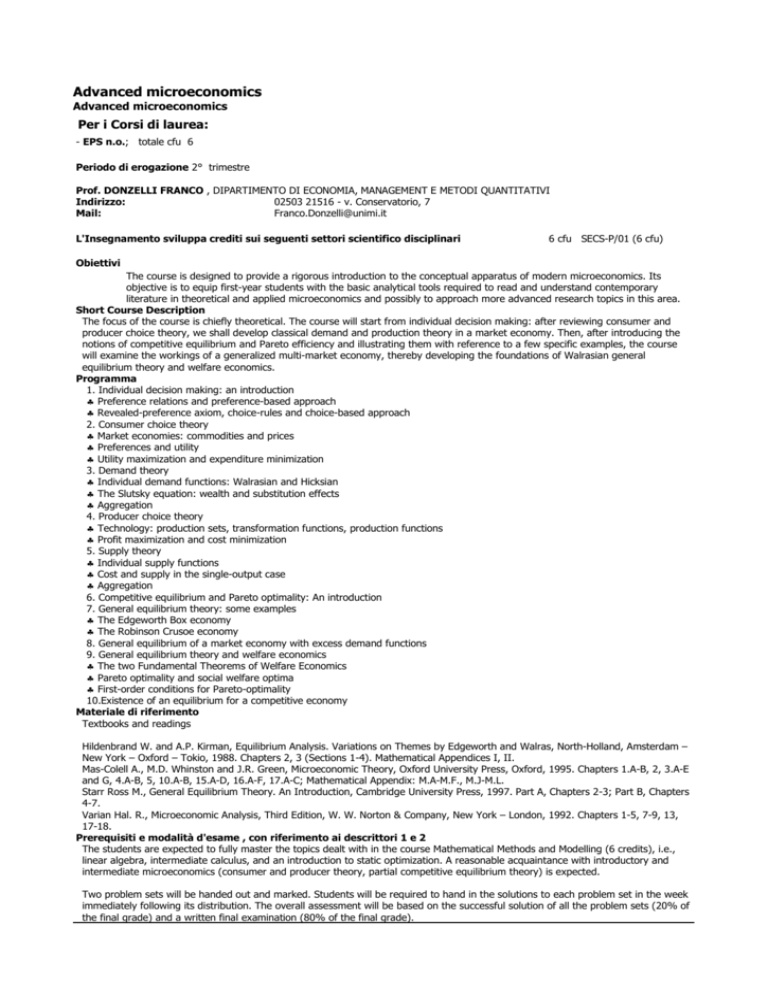
Advanced microeconomics Advanced microeconomics Per i Corsi di laurea: - EPS n.o.; totale cfu 6 Periodo di erogazione 2° trimestre Prof. DONZELLI FRANCO , DIPARTIMENTO DI ECONOMIA, MANAGEMENT E METODI QUANTITATIVI Indirizzo: 02503 21516 - v. Conservatorio, 7 Mail: Franco.Donzelli@unimi.it L'Insegnamento sviluppa crediti sui seguenti settori scientifico disciplinari 6 cfu SECS-P/01 (6 cfu) Obiettivi The course is designed to provide a rigorous introduction to the conceptual apparatus of modern microeconomics. Its objective is to equip first-year students with the basic analytical tools required to read and understand contemporary literature in theoretical and applied microeconomics and possibly to approach more advanced research topics in this area. Short Course Description The focus of the course is chiefly theoretical. The course will start from individual decision making: after reviewing consumer and producer choice theory, we shall develop classical demand and production theory in a market economy. Then, after introducing the notions of competitive equilibrium and Pareto efficiency and illustrating them with reference to a few specific examples, the course will examine the workings of a generalized multi-market economy, thereby developing the foundations of Walrasian general equilibrium theory and welfare economics. Programma 1. Individual decision making: an introduction Preference relations and preference-based approach Revealed-preference axiom, choice-rules and choice-based approach 2. Consumer choice theory Market economies: commodities and prices Preferences and utility Utility maximization and expenditure minimization 3. Demand theory Individual demand functions: Walrasian and Hicksian The Slutsky equation: wealth and substitution effects Aggregation 4. Producer choice theory Technology: production sets, transformation functions, production functions Profit maximization and cost minimization 5. Supply theory Individual supply functions Cost and supply in the single-output case Aggregation 6. Competitive equilibrium and Pareto optimality: An introduction 7. General equilibrium theory: some examples The Edgeworth Box economy The Robinson Crusoe economy 8. General equilibrium of a market economy with excess demand functions 9. General equilibrium theory and welfare economics The two Fundamental Theorems of Welfare Economics Pareto optimality and social welfare optima First-order conditions for Pareto-optimality 10.Existence of an equilibrium for a competitive economy Materiale di riferimento Textbooks and readings Hildenbrand W. and A.P. Kirman, Equilibrium Analysis. Variations on Themes by Edgeworth and Walras, North-Holland, Amsterdam – New York – Oxford – Tokio, 1988. Chapters 2, 3 (Sections 1-4). Mathematical Appendices I, II. Mas-Colell A., M.D. Whinston and J.R. Green, Microeconomic Theory, Oxford University Press, Oxford, 1995. Chapters 1.A-B, 2, 3.A-E and G, 4.A-B, 5, 10.A-B, 15.A-D, 16.A-F, 17.A-C; Mathematical Appendix: M.A-M.F., M.J-M.L. Starr Ross M., General Equilibrium Theory. An Introduction, Cambridge University Press, 1997. Part A, Chapters 2-3; Part B, Chapters 4-7. Varian Hal. R., Microeconomic Analysis, Third Edition, W. W. Norton & Company, New York – London, 1992. Chapters 1-5, 7-9, 13, 17-18. Prerequisiti e modalità d'esame , con riferimento ai descrittori 1 e 2 The students are expected to fully master the topics dealt with in the course Mathematical Methods and Modelling (6 credits), i.e., linear algebra, intermediate calculus, and an introduction to static optimization. A reasonable acquaintance with introductory and intermediate microeconomics (consumer and producer theory, partial competitive equilibrium theory) is expected. Two problem sets will be handed out and marked. Students will be required to hand in the solutions to each problem set in the week immediately following its distribution. The overall assessment will be based on the successful solution of all the problem sets (20% of the final grade) and a written final examination (80% of the final grade). Propedeuticità consigliate Mathematical Methods and Modelling Lingua di insegnamento English
